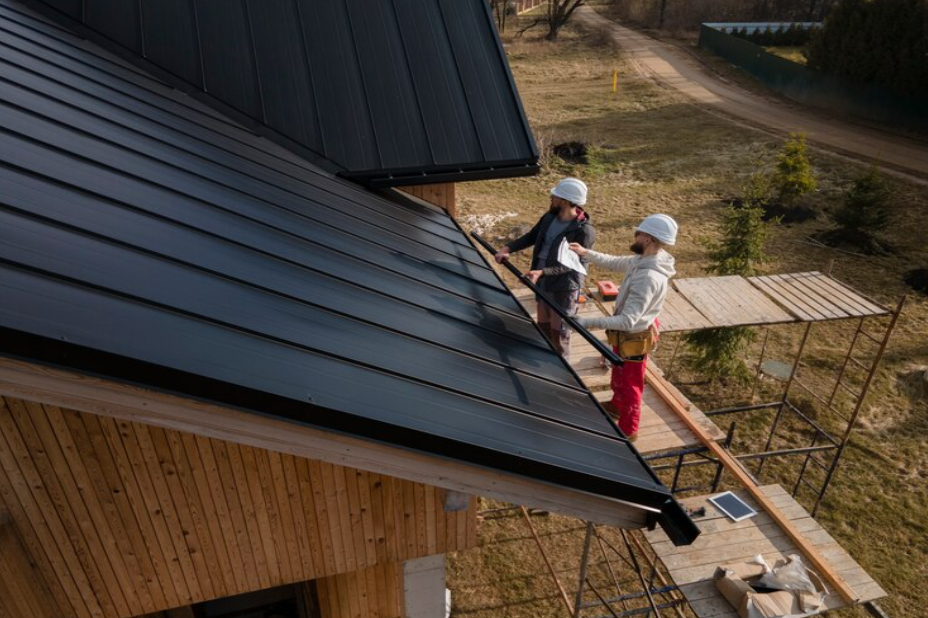
What to know before choosing Rubber Roofing for Flat Roofs
Whether you are installing a new flat roof or replacing an old one, you can expect multiple advantages – affordability, easy upkeep, durability, and ample usable space. However, zeroing in on the right material might seem like a challenging task. In case you are considering rubber roofing for flat roofs, given its widespread usage in the UK, it is important to know about the material’s pros and cons as well as where it stands vis-à-vis other options. Before we get into that, note that the rubber used for roofing purposes is technically known as EPDM (ethylene propylene diene monomer) and the membranes come in various dimensions and thicknesses to suit different needs.
So, let’s dive deeper into rubber flat roofs and what you must keep in mind to make an informed decision.
Pros of Rubber Roofing
Rubber roofing for flat roofs has quickly become popular because of the following reasons:
Longevity:
Come snow, rain, heat, or hail, rubber flat roofs can last for years (30 years to even half a century, depending on the quality) and won’t tear or crack easily. Its elastic nature also makes rubber immune to minor structural expansion or contraction. In other words, rubber can survive extreme weather conditions.
Easy Repair:
Not only is EPDM long-lasting, but in case of any scratch, crack, or damage, repairing it is quite simple. Roofers might just use a liquid rubber tube to fill in any gaps and make your old roof as good as new. Hence, rubber roof repair cost is usually low.
Hassle-Free Maintenance:
Owners of residential or commercial properties often pick rubber roofing for flat roofs because the material doesn’t encourage the growth of moss or mould. This means you don’t need to call professionals frequently for a clean-up. You get to save both time and money this way. Getting rid of any dirt or dust is also hassle-free.
Eco-Friendly:
Often made with recycled rubber and other materials that are safe for the environment, EPDM is sustainable. Rubber flat roofs can be used to manufacture other products as well when the time comes to replace them.
Energy Efficiency:
Though the flat roof rubber membrane cost can range from £70 to £90 per square metre usually, it is worth it as EPDM has superior insulation capabilities. The reflective surface of the material keeps interiors comparatively cool and comfortable during the summer, which means lower utility bills.
Affordability:
A rubber flat roof costs slightly more than an asphalt or felt roof, but less than slate, metal, clay, or fiberglass ones. Overall, it is easy on the pocket and the price is completely worth the material’s durability, robustness, flexibility, eco-friendliness, and energy-efficient nature. Hence, flat rubber roof replacement cost is also reasonable, especially if the underlying structure is in good form.
Cons of Rubber Roofing
No roofing material is perfect in every way. So, rubber roofing for flat roofs comes with the following disadvantages:
Risk of Punctures:
Though rubber can stand up against climatic extremities, if punctured by a random sharp object or falling branch, it will need to be patched up immediately. This is to ensure that water doesn’t leak through later or the underlying structure doesn’t get damaged. The repair can be easily done though. Contractors offering residential and commercial roofing services in the UK often recommend thick membranes to prevent this issue too.
Risk of Expansion or Shrinkage:
Severe ups and downs in temperatures can cause rubber flat roofs to shrink or expand. Periodic inspections and maintenance can tackle this problem though.
Careful Installation Necessary:
While installing rubber membranes, labourers need to be extra careful so there is no gap anywhere. Otherwise, water can seep through. This means they need to take precise measurements and use flashing tape wherever required. The sealing of rubber roofs need to be perfect and might call for specific skills. Simply put, you will need the help of professionals like the ones at FastRoofing.
Limited in Terms of Looks:
Unlike clay tiles or asphalt shingles that are available in different styles, rubber roofs don’t offer too much variety in terms of aesthetics. You might find different shades though to complement your property’s walls or overall scheme.
Rubber vs Other Materials
Knowing where rubber roofing for flat roofs stands vis-à-vis other common materials can help you make a practical choice:
Felt:
Though felt roofs are quite affordable, they don’t last long and are prone to leaks unless maintained rigorously. This material might easily rip or tear too and is not weather-resistant enough. On the other hand, even though a rubber flat roof costs more, it is way more durable, waterproof, strong, and resistant to blistering or tearing.
Asphalt Shingles:
These are more cost-effective than rubber, but might need to be replaced after 15 or 20 years. It is easier to foot flat rubber roof replacement cost instead as such roofs last for 30 to 50 years. Shingles are also prone to cracking, moss growth, curling, blistering, and sagging.
Metal:
Though metal roofs are almost as long-lasting as rubber, they lack adequate insulation properties. This means your interiors can get really hot during summer and cold during winter. Rubber is comparatively lighter too.
Fiberglass:
Compared to flat roof rubber membrane cost, fiberglass is pricey but usually a little more durable and robust. It is also more resistant to the impact of sharp objects vis-à-vis rubber. While both materials can be repaired with ease, the work done is barely visible in case of fiberglass.
Conclusion
By now, you have a clear idea of what is good and slightly concerning about rubber roofing for flat roofs. Even though the material needs to be installed expertly and is a little prone to punctures, shrinkage, and expansion, it is extremely durable, cost-effective, energy-efficient, and safe for the planet. It is hassle-free to maintain or repair a rubber flat roof as well. So, if your mind is made up and you are on the lookout for a reputed and reliable company offering residential or commercial roofing services, your search ends with FastRoofing. As one of the leading roofing contractors in London, UK, FastRoofing ensures top-quality service for all your roofing needs. Get in touch with the experts here for more guidance on rubber roofing and expect a premium-quality job with no stress.
